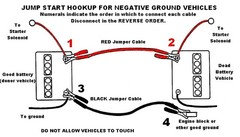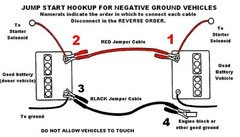dead battery question
maryellen87
9 years ago
Featured Answer
Sort by:Oldest
Comments (14)
mownie
9 years agobill_kapaun
9 years agoRelated Professionals
West Milford Landscape Architects & Landscape Designers · Hershey Landscape Architects & Landscape Designers · Allentown Landscape Contractors · Chesapeake Ranch Estates Landscape Contractors · Firestone Landscape Contractors · Fort Worth Landscape Contractors · Hayward Landscape Contractors · Mastic Beach Landscape Contractors · Vermilion Landscape Contractors · Watertown Landscape Contractors · Wentzville Landscape Contractors · York Landscape Contractors · Ferguson Landscape Contractors · Brighton Window Contractors · Bridgeport Window Contractorsckr74
9 years agoexmar zone 7, SE Ohio
9 years agokrnuttle
9 years agomownie
9 years agoyardtractor1
9 years agoexmar zone 7, SE Ohio
9 years agokrnuttle
9 years agoyardtractor1
9 years agoJeff Wilson
5 years agotomplum
5 years agomownie
5 years ago
Related Stories

DECORATING GUIDES12 Deadly Decorating Sins
Are your room designs suffering from a few old habits? It may be time to change your ways
Full Story
KITCHEN DESIGN9 Questions to Ask When Planning a Kitchen Pantry
Avoid blunders and get the storage space and layout you need by asking these questions before you begin
Full Story
DECORATING GUIDESNo Guilt! 7 Deadly Sins in Décor
Make a room more interesting with a hint of gluttony, pride, sloth and the rest — no redemption required
Full Story
FUN HOUZZHow to Survive an Epidemic of Walking Dead
Tips to use around the house and garden to prep for the zombie apocalypse
Full Story
FEEL-GOOD HOMEThe Question That Can Make You Love Your Home More
Change your relationship with your house for the better by focusing on the answer to something designers often ask
Full Story
GREEN BUILDINGConsidering Concrete Floors? 3 Green-Minded Questions to Ask
Learn what’s in your concrete and about sustainability to make a healthy choice for your home and the earth
Full Story
SELLING YOUR HOUSE15 Questions to Ask When Interviewing a Real Estate Agent
Here’s what you should find out before selecting an agent to sell your home
Full Story
DOORS5 Questions to Ask Before Installing a Barn Door
Find out whether that barn door you love is the right solution for your space
Full Story
EXTERIORSCurb Appeal Feeling a Little Off? Some Questions to Consider
Color, scale, proportion, trim ... 14 things to think about if your exterior is bugging you
Full Story
REMODELING GUIDESSurvive Your Home Remodel: 11 Must-Ask Questions
Plan ahead to keep minor hassles from turning into major headaches during an extensive renovation
Full Story







tomplum